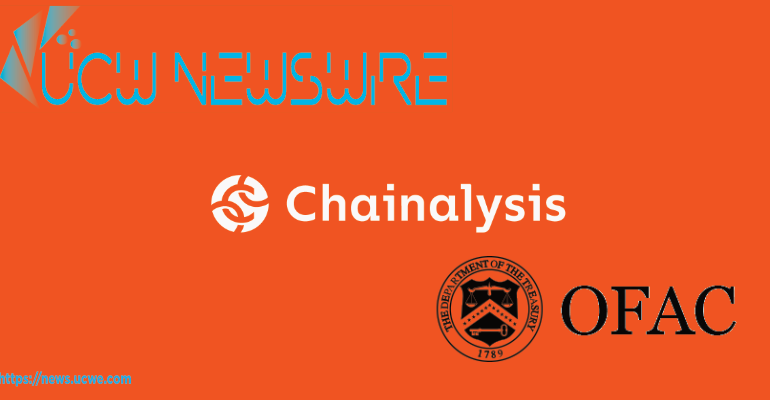OFAC’s New Crypto Playbook as Sanctions Reshape the Illicit Financial Landscape in 2024
In a striking illustration of how geopolitical tensions and digital innovation are converging, a recent Chainalysis report reveals that jurisdictions and entities sanctioned by the U.S. Office of Foreign Assets

In a striking illustration of how geopolitical tensions and digital innovation are converging, a recent Chainalysis report reveals that jurisdictions and entities sanctioned by the U.S. Office of Foreign Assets Control (OFAC) received a staggering $15.8 billion in cryptocurrency transactions in 2024. This figure represents 39% of all illicit crypto activity over the past year—a clear signal that as traditional financial systems tighten, sanctioned actors are increasingly turning to digital assets.
Sanctions in a Shifting Global Environment
The evolving sanctions regime reflects a broader transformation in both the scope and strategy of U.S. financial restrictions. With increasing geopolitical pressures, OFAC is moving beyond targeting individuals and small groups. Instead, it is setting its sights on the financial infrastructure that enables state-backed financing and illicit trade. This strategy shift comes as part of a concerted effort by the U.S. and its allies to dismantle the economic lifelines of sanctioned regimes, particularly those of Russia’s wartime economy and Iran’s Islamic Revolutionary Guard Corps (IRGC).
Capital Flight in Sanctioned Jurisdictions
One of the most compelling aspects of the report is the behavior of residents in heavily sanctioned jurisdictions, such as Iran. Faced with restrictive economic conditions, many have turned to cryptocurrency as a lifeline. Iranian centralized exchanges (CEXs) experienced significant surges in both usage and outflows, with transaction patterns that suggest widespread capital flight. This digital migration not only underscores the resilience of crypto as an alternative financial channel but also poses significant challenges for regulators seeking to stem illicit flows.
Record-Breaking On-Chain Activity
The numbers tell a powerful story. In 2024, OFAC issued 13 designations that included cryptocurrency addresses, just slightly fewer than in 2023, yet still the second-highest in the last seven years. More strikingly, sanctioned jurisdictions commanded nearly 60% of the total value of sanctions-related activity by the end of the year. This record share points to an increasingly concentrated effort by sanctioned states and entities to leverage digital currencies, complicating efforts to track and intercept illicit funds.
Targeting the Financial Backbone
OFAC’s renewed focus is not merely about naming and shaming individuals—it’s about disrupting the entire financial ecosystem that supports illicit activity. For instance, the recent sanctioning of KB Vostok OOO, a Russian UAV developer known for supplying drones to Russian forces in Ukraine, illustrates this broader strategy. KB Vostok, which solicited cryptocurrency donations and likely used crypto to facilitate UAV sales, is now among nearly 400 entities targeted as part of a comprehensive campaign against Russia’s military supply chain. Similar measures against entities like OKO Design Bureau further demonstrate how U.S. authorities are zeroing in on the financial arteries that sustain sanctioned operations.
The Broader Implications for the Crypto Industry
The findings of the Chainalysis report have profound implications for the cryptocurrency sector. As digital assets become an increasingly popular conduit for evading traditional financial controls, regulatory bodies worldwide are compelled to adapt. The trend toward using cryptocurrency to bypass sanctions not only raises critical questions about the efficacy of current regulatory frameworks but also challenges the industry to develop new, robust systems of oversight and compliance.
For investors, these developments signal a rapidly changing risk landscape. The interplay between geopolitical events and digital finance means that market dynamics can be influenced by policy shifts and enforcement actions on a global scale. As such, both market participants and regulators must remain vigilant in an environment where billions of dollars can flow through digital channels unchecked, until, of course, they are intercepted by an evolving regulatory apparatus.
As 2024 comes to a close, the crypto world stands at a crossroads. On one hand, digital currencies continue to offer unprecedented financial freedom, especially for those in sanctioned jurisdictions fighting economic isolation. On the other, the intensification of sanctions and the corresponding regulatory crackdown underscore a growing consensus: the era of unchecked crypto flows is drawing to a close.
The U.S. Treasury’s OFAC is clearly signaling that it will no longer tolerate the exploitation of cryptocurrencies to underwrite illicit activities and circumvent international sanctions. Whether these measures will stifle innovation or force the crypto industry into new forms of compliance remains to be seen. However, one thing is certain—2024 has reshaped the contours of illicit crypto activity, setting the stage for a new chapter in the battle between state authorities and the decentralized digital economy.
Ben Tang
UCW Newswire

